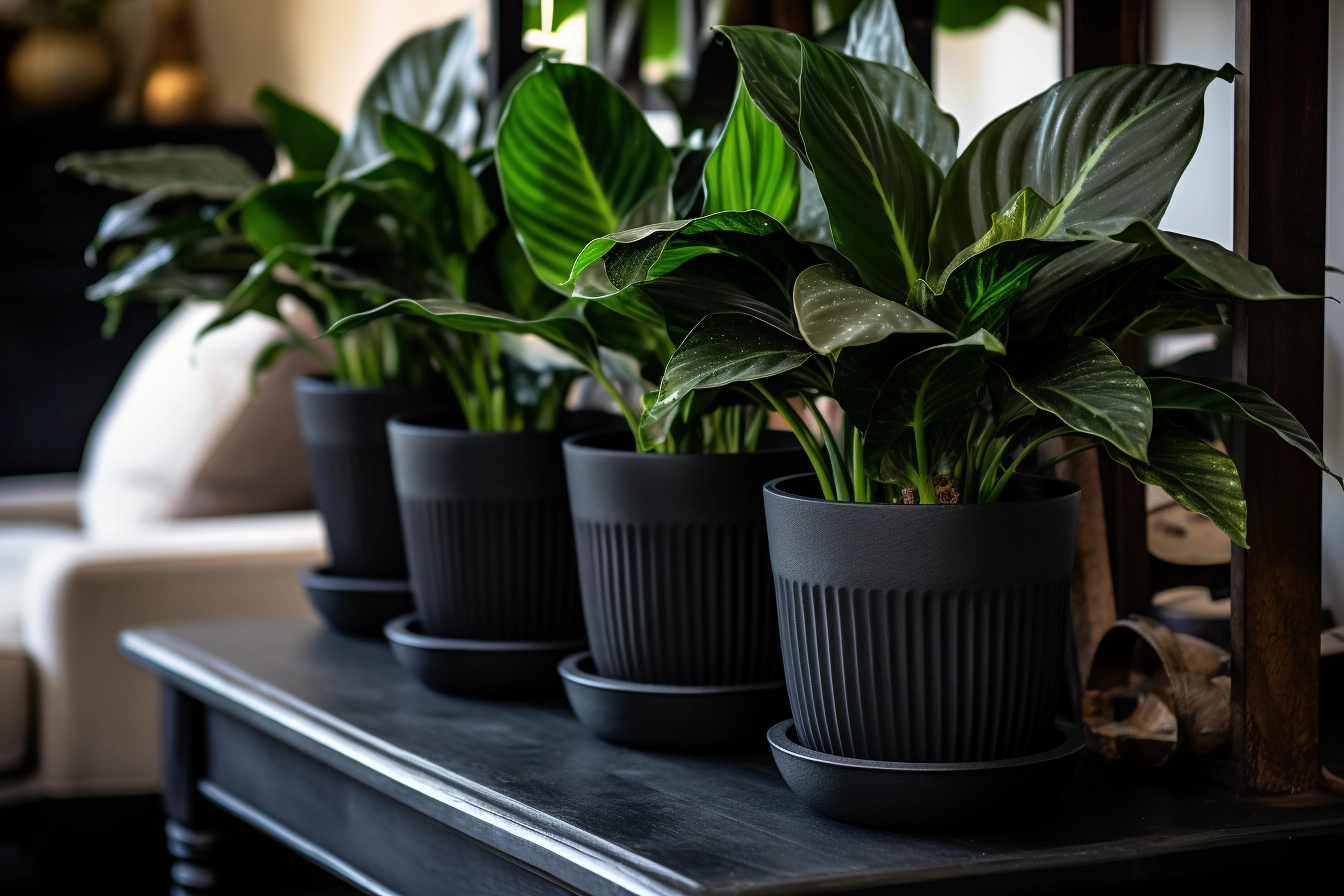Black house plants are gaining popularity for their striking appearance and the contrast they offer in typical green indoor gardens. They’re not only visually stunning but also come with the same air-purifying and mood-boosting benefits as their green counterparts.

Why Choose Black House Plants?
- Visual Impact: They provide a dramatic backdrop for other plants and decor.
- Versatility in Design: Perfect for modern, minimalist, and eclectic styles.
- Unique Addition: They stand out in plant collections, offering diversity.
🌱 Top Black House Plants for Your Home
1. Black Velvet Alocasia (Alocasia reginula)
- Appearance: Dark, velvety leaves with striking white veins.
- Care Tips: Prefers high humidity, indirect light, and well-draining soil.
2. Black Zamioculcas Zamiifolia (ZZ Plant)
- Appearance: Glossy, dark leaves on a sturdy, upright plant.
- Care Tips: Tolerates low light, infrequent watering, and dry air.
3. Raven ZZ Plant (Zamioculcas Zamiifolia ‘Raven’)
- Appearance: Almost black leaves that start out green.
- Care Tips: Similar to the Black ZZ Plant, with a preference for well-drained soil.
4. Burgundy Rubber Plant (Ficus elastica ‘Burgundy’)
- Appearance: Deep burgundy, almost black leaves.
- Care Tips: Enjoys bright, indirect light and regular watering.
5. Black Mondo Grass (Ophiopogon planiscapus ‘Nigrescens’)
- Appearance: Grass-like, dark purple to black leaves.
- Care Tips: Prefers full sun to partial shade and well-drained soil.
🌿 Care and Maintenance for Black Plants
Light Requirements
- Understanding Light Needs: While some black plants, like the ZZ Plant, tolerate low light, others may require more brightness to maintain their color.
Watering and Humidity
- Watering Schedule: Overwatering is a common issue. Wait until the top inch of soil is dry before watering.
- Humidity Needs: Many black plants come from tropical environments and appreciate higher humidity.
Soil and Potting
- Right Soil Mix: Use a well-draining potting mix to prevent root rot.
- Potting and Repotting: Repot when the plant outgrows its container, typically every 2-3 years.
Temperature
- Ideal Conditions: Most black house plants prefer temperatures between 60°F and 75°F (15°C – 24°C).

🖤 Decorating with Black House Plants
Creative Display Ideas
- Contrast with Light: Place against light-colored walls or furniture for a dramatic effect.
- Grouping with Other Plants: Combine with green plants for a lush, multi-tonal display.
- Seasonal Decor: Utilize black plants for Halloween or as sophisticated winter decor.
Pairing with Home Decor
- Modern and Minimalist: Sleek, white or metallic pots accentuate the modern appeal.
- Bohemian and Eclectic: Mix with colorful or textured planters for a boho-chic look.
- Elegant and Sophisticated: Opt for classic ceramic or stone pots.
🌟 Spotlight on Rare Black Plants
Uncommon Finds for Enthusiasts
- Black Orchid (Coelogyne pandurata)
- Appearance: Rare orchid with stunning black and green flowers.
- Care: Requires specific orchid care, including high humidity and indirect light.
- ‘Black Prince’ Echeveria
- Appearance: Rosettes of dark, nearly black leaves.
- Care: Loves full sun and infrequent watering; perfect for succulent lovers.
🔄 Overcoming Challenges in Caring for Black Plants
Solving Common Problems
- Fading Color: Lack of light can cause the leaves to revert to green. Increase light exposure gradually.
- Drooping Leaves: Often a sign of overwatering or poor drainage.
- Pest Issues: Keep an eye out for common pests like spider mites and treat promptly.
Embrace the elegance and mystery of black house plants to create a stunning and unique indoor garden. Their visual appeal, coupled with the same benefits as traditional house plants, makes them a compelling choice for any plant lover. Whether you’re starting your collection or looking to add a unique specimen, black house plants offer a world of possibilities for indoor gardening enthusiasts. 🖤🌿💚

